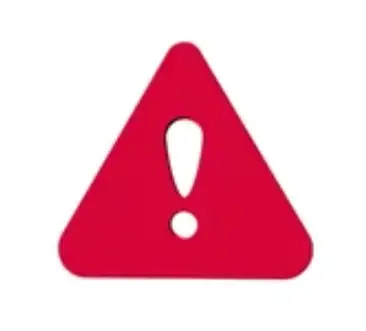Unhooking a gooseneck trailer can be a daunting task, especially if you’re new to it. However, it’s an essential skill that every trailer owner should know. Knowing how to unhook a gooseneck trailer can save you time and money in the long run, as well as ensure your safety and the safety of others on the road.
Before you start unhooking your gooseneck trailer, it’s important to take some safety precautions. This includes inspecting the trailer and tow vehicle for any damage or defects, ensuring the trailer is on a level surface, and disconnecting the trailer’s electrical connections. Once you’ve taken these steps, you can proceed with unhooking the trailer.
In this article, we’ll provide you with a step-by-step guide on how to unhook a gooseneck trailer, as well as some post-unhooking checks and common questions and answers to help you along the way.
Quick Knowledge:
- Unhooking a gooseneck trailer is an essential skill that every trailer owner should know.
- Before unhooking, take safety precautions such as inspecting for damage, ensuring the trailer is on a level surface, and disconnecting electrical connections.
- Follow these step-by-step instructions for unhooking your gooseneck trailer, and make sure to perform post-unhooking checks to ensure everything is secure.
Safety Precautions Before Unhooking

Before unhooking a gooseneck trailer, it is important to take some safety precautions to ensure that the process is done safely and efficiently.
In this section, we will discuss some of the key safety measures that you should take before unhooking your gooseneck trailer.
Inspect the Trailer
Before unhooking the trailer, it is important to inspect it thoroughly to ensure that it is safe to disconnect.
Check the key components of both the tractor and trailer for damage and defects.
Any damage could increase the risk of an accident, even if you follow the right procedures when unhooking.
Take an especially close look at the fifth wheel and ensure there are no cracks or bent parts.
Position the Vehicle
The first step to unhooking your gooseneck trailer is to position your vehicle and trailer correctly.
Ensure that your vehicle is parked on a level surface and that the trailer is in a straight line with the vehicle.
This will make it easier to unhook the trailer and reduce the risk of accidents.
Check the Level Surface
It is important to park your vehicle and trailer on a level surface before unhooking the gooseneck trailer.
This will ensure that the trailer is stable and will not move or roll while you are unhooking it. If the surface is not level, you may need to use wheel chocks to prevent the trailer from moving.
Taking these safety precautions before unhooking your gooseneck trailer can help reduce the risk of accidents and ensure that the process is done safely and efficiently.
By inspecting the trailer, positioning the vehicle correctly, and checking the level surface, you can ensure that you are unhooking your gooseneck trailer in the safest way possible.
See Related: How To Level A Camper
Step by Step Guide to Unhook a Gooseneck Trailer
If you’re new to towing a gooseneck trailer, it’s essential to know how to unhook it safely. Here’s a step-by-step guide to help you do it with ease.
Disengage the Hitch
The first step is to disengage the hitch.
To do this, you need to release the locking mechanism that holds the trailer in place. Make sure your truck is parked on a level surface and engage the parking brake.
Then, use the handle on the hitch to release it from the ball on your truck.
Detach the Safety Chains
After disengaging the hitch, you need to detach the safety chains.
These chains are designed to prevent the trailer from separating from the truck in case the hitch fails. Locate the chains and remove them from the hooks on your truck.
Be sure to keep them off the ground and secure them to the trailer.
Disconnect the Electrical Connections
Most gooseneck trailers come with electrical connections that power the trailer’s brakes and lights. Before you can unhook the trailer, you need to disconnect these connections.
Look for the plug that connects the trailer to your truck and remove it.
Make sure you tuck it away safely to avoid any damage.
See Related: How To Clean a Trailer Plug
Lower the Landing Gear
The final step is to lower the landing gear. This gear is located at the front of the trailer and is used to support the weight of the trailer when it’s not attached to the truck.
Use the crank to lower the gear until the trailer is level. This will also help to take the weight off the hitch, making it easier to disengage.
Post Unhooking Checks

After unhooking your gooseneck trailer, it’s important to perform a few post-unhooking checks to ensure that everything is in good working order. Here are some things to keep in mind:
Inspect for Any Damage
Before storing your trailer, it’s important to inspect it for any damage. Check the key components of both the tractor and trailer for damage and defects.
Take an especially close look at the fifth wheel and ensure there are no cracks or bent parts.
Damage could increase the risk of an accident even if you follow the right procedures when unhooking.
See Related: How To Remove A Gooseneck Ball
Test the Brakes
After unhooking your trailer, test the brakes to ensure they are working properly. This is especially important if you plan on storing the trailer for an extended period of time.
To test the brakes, apply the foot brake on your truck and make sure the trailer brakes engage.
If they don’t, it may be time to replace the brake pads or adjust the brake controller.
Store the Trailer Properly
Once you’ve inspected the trailer for damage and tested the brakes, it’s time to store it properly.
See Related: How Much Does RV Storage Cost? and How To Prevent RV Mold During Storage
Make sure the trailer is parked on level ground and the parking brake is engaged. If your trailer has a support stand or jack, use it to support the trailer while unhooking it from the truck hitch ball mount.
This will keep the trailer stable and prevent it from rolling away.
In addition to these post-unhooking checks, it’s also important to perform regular maintenance on your gooseneck trailer.
This includes checking the tire pressure, lubricating the wheel bearings, and inspecting the electrical system.
By taking care of your trailer, you can ensure that it will last for years to come.

